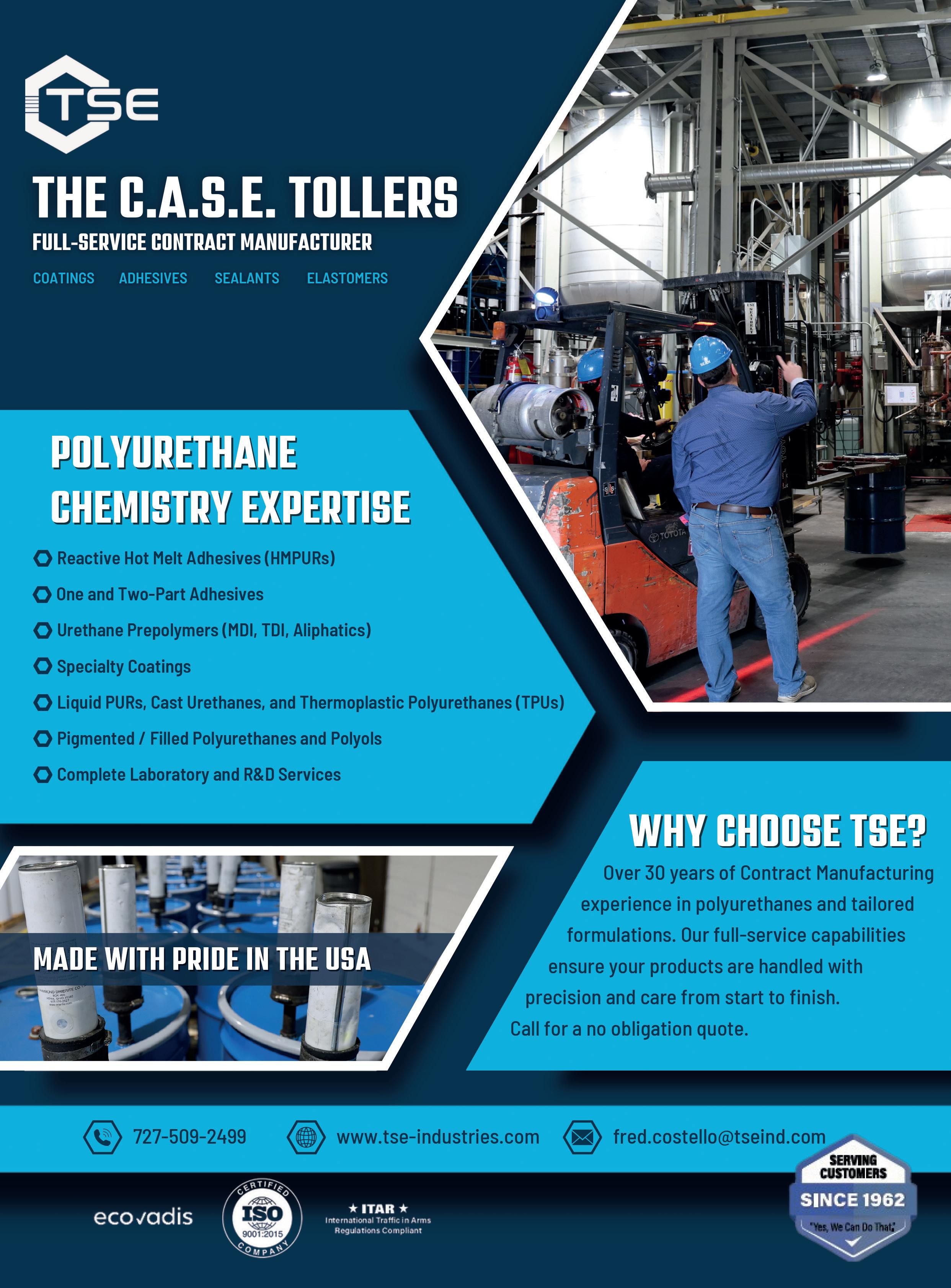




How will new regulatory and tariff policies play out?
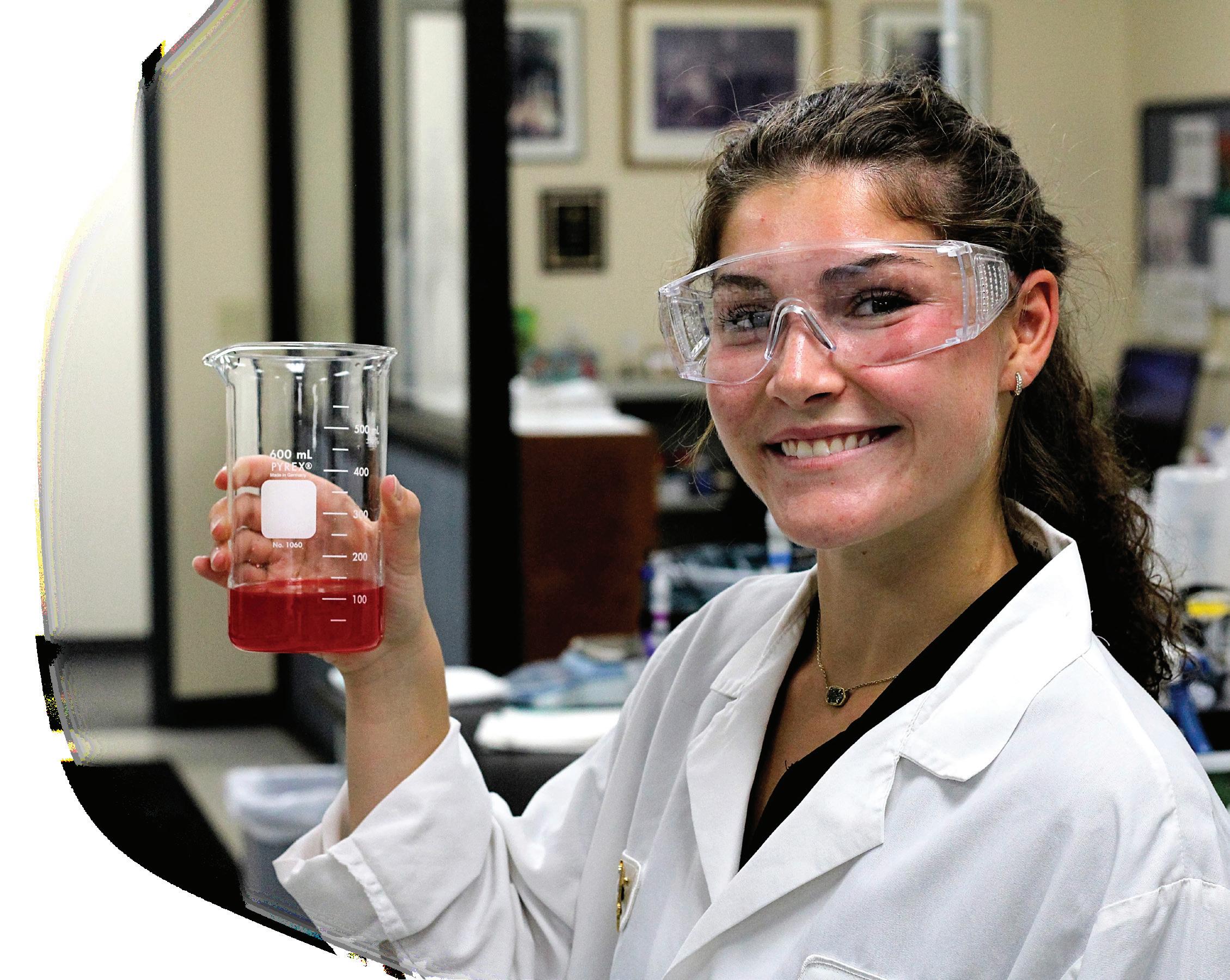






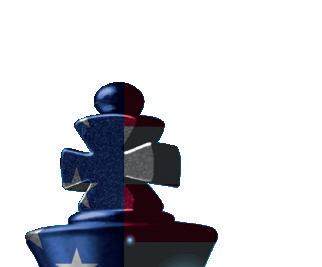






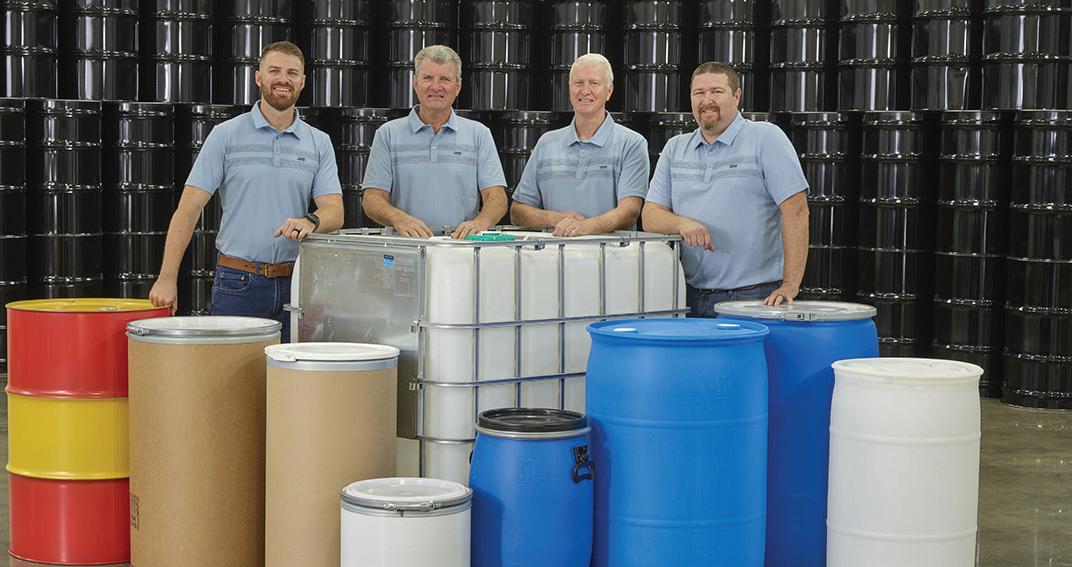
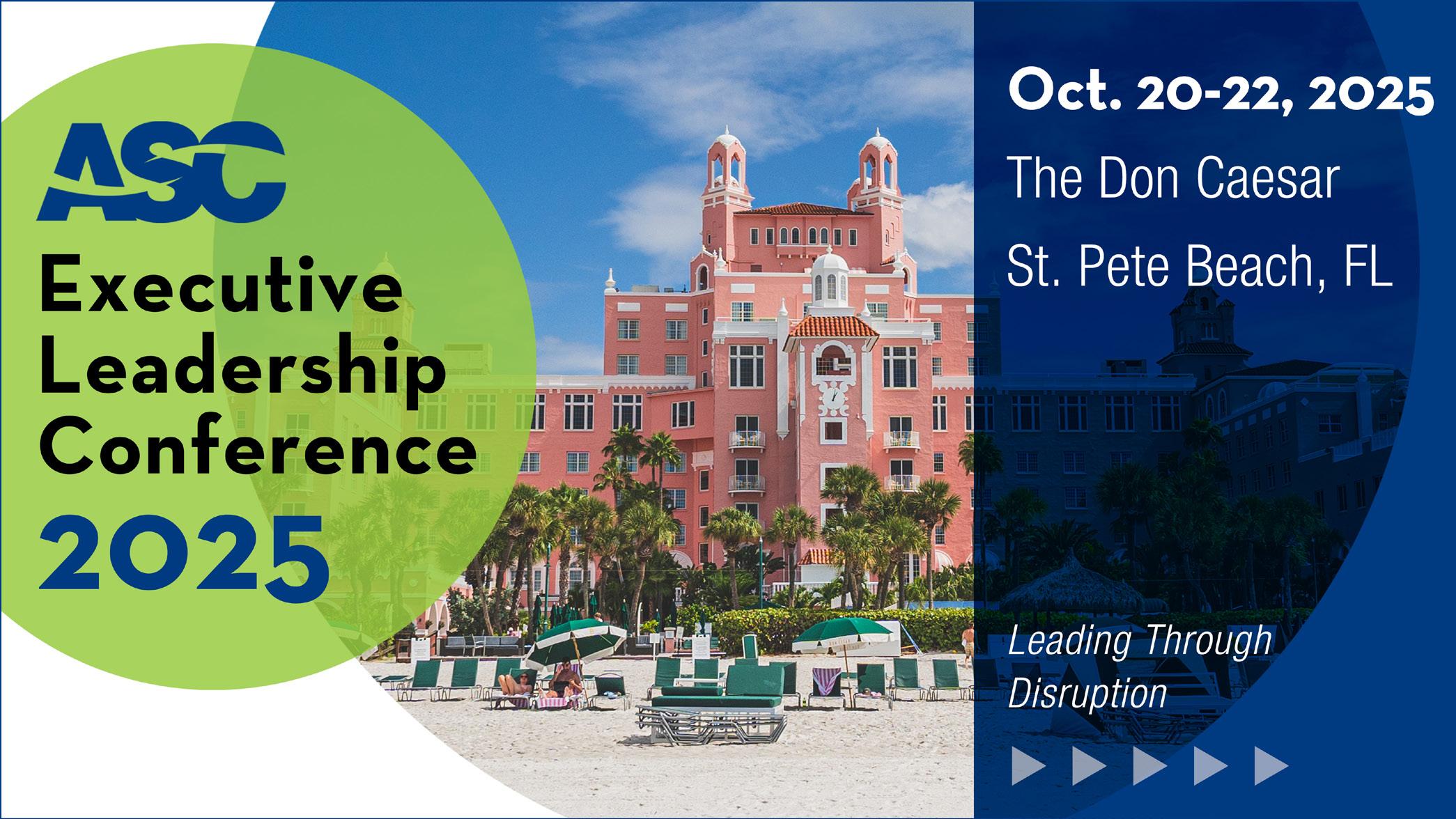
Maybe you’ve heard the saying, “Revolve your world around the customer and more customers will revolve around you.”?
This year, the ASC Board and staff are engaging the membership in multiple ways to ensure the value we deliver to you, our customer, is relevant and helps you grow your business.
We have deployed surveys, telephone interviews, and focus groups to talk about what matters to you and your company. By the end of the year, your feedback will have helped us create a new strategic plan that will guide our priorities and resources into the future.
We are committed to revolving our world around you. For the past 68 years, we have been delivering programs and services for you, but we exist because of you.
ASC’s mission is defined by our members’ needs. Currently, they are advocacy, end user engagement, and sustainability. Over the past four years, we have allocated significant human and capital resources aligned with those three priorities. As a result, ASC’s membership has grown 10% year-over-year for the past three years.
Working together, we accelerate the adoption of adhesives and sealants across markets you serve to strengthen your business. Through this renewed effort, your voice will be essential once again in identifying the challenges your company faces and ways in which you expect ASC, through your membership, to address them.
Bill Allmond, President, ASC
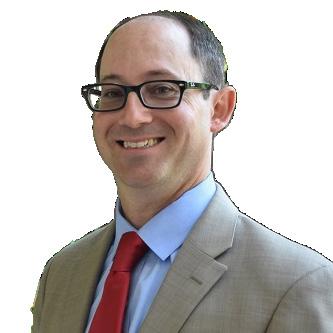
ASC was proud to represent the North American adhesive and sealant industry at the International Association Heads Meeting that took place in Kaohsiung City, Taiwan, from October 28-30, 2024.
The meeting, held every two years, provides an opportunity for associations from all the different regions to come together and discuss the biggest issues affecting the sector and market trends, as well as regulatory developments and challenges.
It was hosted by the Taiwan Synthetic Resins and Adhesives Industrial Association or TSRAIA. The previous meeting was held at the 10th World Adhesive and Sealant Conference in April 2022,
which was hosted by ASC in Chicago, Illinois, US.
While there, Bill Allmond, ASC President, was honored to deliver a very special plaque of recognition on behalf of the ASC Board of Directors, thanking the Taiwan association for years of friendship, cooperation, and collaboration.
Presentations delivered at the meeting are available to ASC members. To request access to this content, please reach out via email at bill.allmond@ascouncil.org
During the visit, it was also decided that Taiwan would host the 2030 World Adhesive and Sealant Conference. The event is held every four years, with it next taking place at the QEII Centre in London, UK, in 2026.
Just a few months into 2025 and ASC is proud to see 15 new additions to the membership. It is fantastic to see the organization continue to grow year on year, and so many manufacturers, suppliers, and distributors – from family-owned businesses to the multinational conglomerates – joining us to help shape the future of the North American adhesive and sealant market.
Below is a list of our new members in 2025, so far:
• 3D Barrier Bags Inc
• Bryant Park Consulting
• Calcean Minerals & Materials
• ChemSpec
• Ergon Energy & Specialty Solutions
• Fluid-Bag LLC
• Hodgson Sealants Ltd
• Infineum International

• Microban
• MO SCI, LLC
• Newry LLC
• Nucleus Inc. (Stanley Chemicals)
• Poly-clip System
• Quin Global US
• Sonoco Products
The full membership directory is available online via our website. Scan QR code or visit www.ascouncil.org/member-directory
ASC remains committed to bringing you the latest industry news and market updates. That is why, besides this very publication, ASC also regularly produces a free newsletter, the Quarterly Bulletin Published every few months, this convenient digital publication is packed with all the latest information about what ASC has been up to, upcoming conferences and events, training opportunities, and much more.
Recent issues have reflected on ASC’s new Board of Directors Chair, Tom Stewart (turn to page 10 in this issue to read an exclusive interview with him about his two-year term); the 2025 Scholarship Program (see page 20); ASC’s recent visit to Taiwan to represent the North American adhesive and sealant industry at the global Association Heads Meeting (page 18); the success of last year’s Executive Leadership Conference; as well as the key talking points from the Sustainability Summit.

The quarterly e-newsletter is emailed directly to all ASC members, but if you have missed it, the latest edition and all previous issues can be accessed by scanning the QR code or by visiting the ASC website at www.ascouncil. org/quarterlyupdates-and-ascpublications



Do you know someone who deserves to be added to ASC’s Hall of Fame? This is your chance to submit a nomination for the Class of 2025 and honor someone who has made a significant and lasting contribution to the world of adhesives and sealants.
To date, ASC has added seven leading industry figures to its Hall of Fame: James J. Owens (Class of 2022); Theodore (Ted) Clark, Dr. Selim Yalvac, and David Nick (Class of 2023); Bill Arendt, Traci Jensen, and the late Rusty Thompson (Class of 2024).
Their leadership, contributions, and commitment have helped shape our industry and lay the foundations for the future.
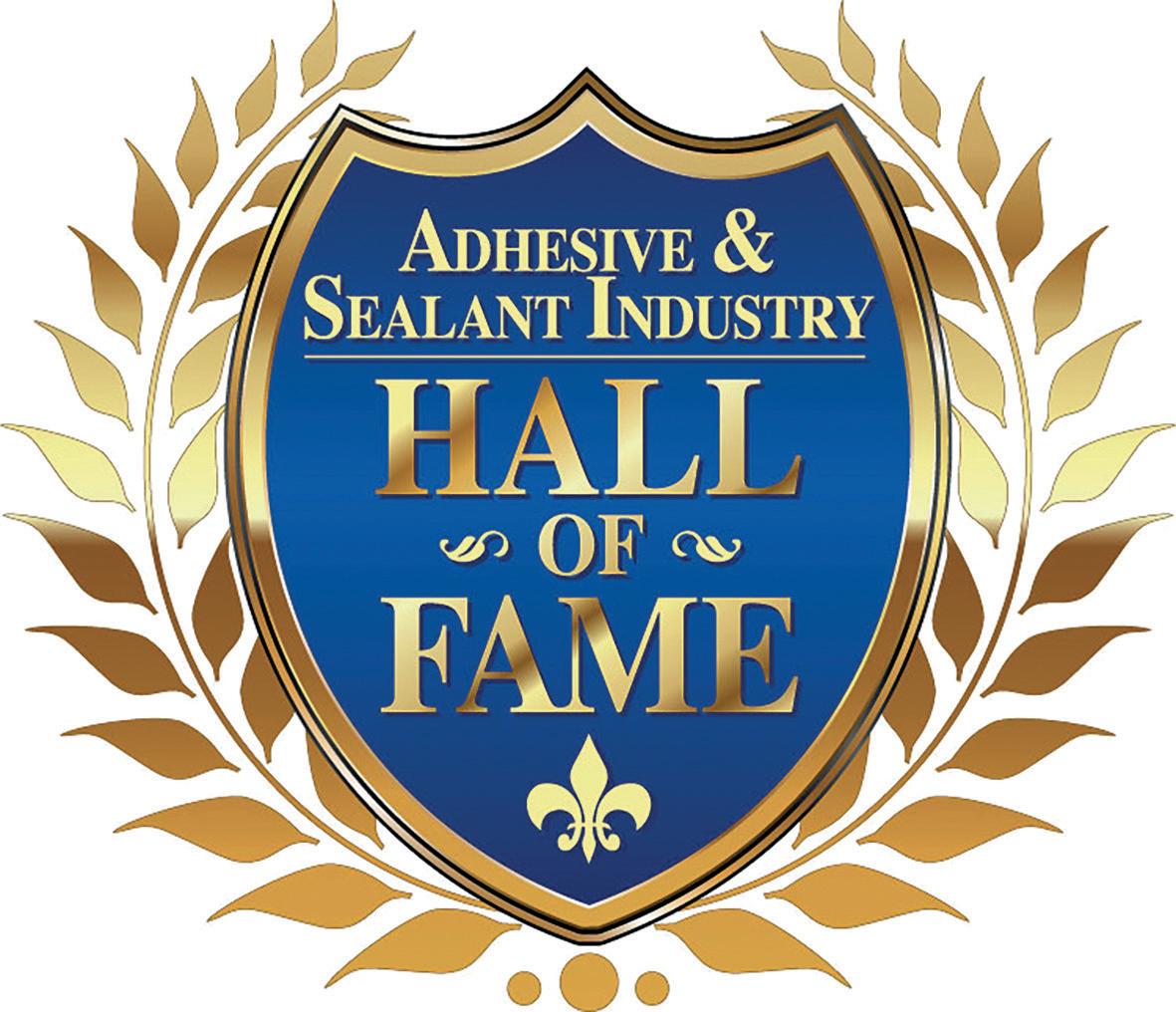
Now, we want you to put forward any individuals you think should join them.
Mark September 22-24, 2025, in your calendar and be part of ASC’s next Adhesive & Sealant Sustainability Summit, where you can learn about the latest trends, market drivers, and opportunities surrounding this important topic.
Later this fall, attendees at this unmissable event at the Hotel Cleveland, Autograph Collection in Cleveland, Ohio, can expect engaging discussions, networking opportunities, and presentations from leading industry experts, government, NGOs, and academia.
The annual Summit brings together the industry’s value
chain and focuses on how future needs can be met through the development of innovative products, the introduction of new technologies, and the shift towards more environmentally friendly strategies and solutions. The event made a welcome return in 2022 after an eightyear hiatus, reflecting the growing importance to ASC’s membership.
Scan the QR code or visit the website at www.ascouncil. org/events/2025sustainabilitysummit to stay updated.

Nominations need to be submitted to ASC’s President, Bill Allmond, by the May 1 deadline.
A task force will then review and assess the submissions and recommend one to three nominees to the ASC’s Board of Directors.
Those selected will be notified and invited to attend their induction ceremony at the Chair’s Reception and Dinner at the Executive Leadership Conference from October 20-22, 2025, in St. Pete Beach, Florida. They will also receive a special plaque and complimentary lifetime access to all future Executive Leadership Conferences.
To find out more about how to nominate, scan the QR code or visit the website at www. ascouncil.org/ asc-hall-of-fame


The always popular EXPO is a bustling marketplace where ASC members showcase their products and services to Convention attendees. Below is the list of exhibitors at the time of writing. For live updates and the latest EXPO information, visit https://homebase.map-dynamics.com/ ascexpo2025/floorplan or scan the QR code.

(as of March 21, 2025)

May 23, 2025
How AI Helps You Prepare for Deeper Customer Conversations
Dan Adams, Founder of The AIM Institute, hosts a webinar that explores how artificial intelligence is transforming the B2B customer experience.

June 11, 2025
Grants to Support Manufacturing and Sustainability Projects
Join Micki Vandeloo, Lakeview Consulting, Inc. to learn about the grants and incentives available to manufacturers.

July 16, 2025
Debonding by Design: Unlocking Sustainable Assembly with Reversible Adhesives
Kristoffer Stokes, Geisys Ventures, leads an in-depth session on Sustainable Assembly with Reversible Adhesives.
September 22-24, 2025
Sustainability Summit
Book your place at ASC’s annual Sustainability Summit in Cleveland, Ohio, for insight and analysis about this important issue, as well as updates on the innovations, and chemistries that are driving it.
September 29, 2025
International Adhesive & Sealant Day
Celebrate the countless ways adhesives and sealants bond the world together. Raise awareness and outreach about the role played by the industry and how your products are making the future possible!
October 20-22, 2025
Executive Leadership Conference
Be among the senior executives and managers discussing market trends and leadership techniques at the 2025 Executive Leadership Conference being held in St. Pete Beach, Florida.
ASC’s newly appointed Board Chair is focused on growing the membership and ensuring the organization remains the standard bearer for the industry
Tom Stewart, Business Director, Building Components at Bostik, succeeded Forest Driggs as Chairman of ASC’s Board of Directors, on January 1, 2025. As he starts his two-year tenure, he says he is immensely proud to now be leading an association that plays such a vital role in the adhesive and sealant industry.
“Historically, ASC has had some really solid leadership, and I hope to be able to keep that going,” says Stewart. “I've been involved with the organization on the Board and the Executive Committee for a number of years now, most recently as Treasurer. It’s a really talented and dedicated group of people working at ASC alongside [ASC President] Bill Allmond and this is a great opportunity to be able to work a little closer with the team.”
“Everybody that's come into this role before me has done a great job; it's just a matter of keeping that going, making the right decisions, and doing the right things. There's a lot of cyclicality in this market and a lot of volatility right now – but ASC has persevered over the years and has continued to grow.”
Certainly, Stewart takes on his new role at a time when the market faces its fair share of challenges and opportunities. After a tricky 2024, these remain uncertain times, but he is optimistic the adhesive and sealant sector will remain strong and be able to navigate the year ahead.
First and foremost, as ASC’s new Chair, he intends to draw on his more than 25 years of experience in the sector to help expand the association’s programs and services, making it even more appealing to prospective members.
“I've run a number of different businesses with two major organizations over the years and have always focused on innovation and bringing value – but the key part of it has been the people,” he says. “Something this industry has is really good people and I just want to make sure I listen to the ASC team and can help guide them as much as I can in my new role.”
Stewart acknowledges the strong sense of community within ASC’s membership, and the collective expertise and skills that are helping to shape the future of this vitally important industry.
Certainly, the value of collaboration and networking is not lost on him, and he is determined to encourage further engagement with the organization, strengthen existing relationships, and continue to expand the membership.
“One of my main priorities will be focusing on attracting more young people to the industry,” says Stewart. “Right now, the adhesive and sealants industry has a lot of people with 20-30 plus years’ experience. The challenge that a lot of our members are going to have within the next 5-10 years, is a lot of

those people are going to be leaving, which will leave some big holes in the industry. This is definitely something we need to work on.
“There are a lot of other industries where young people are choosing to go instead. We need to make sure that we, as an industry, are as attractive to them.”
“Number one, we need to make them aware of us at the academic level – and I know there's already been work going on around that. Secondly, we need to take a look at both what ASC is doing and what our members are doing to ensure we’re all working towards recruiting the best and the brightest.”
ASC continues to spearhead numerous initiatives to help attract people to the sector and support their professional development. Education is one of the core principles
of ASC’s strategic plan and there is a huge catalog of resources available to members that provides valuable insight into the fundamentals of adhesive and sealant technologies, market dynamics, and innovative chemistries (see page 20).
“ASC has always been focused on improving the resources, services, and benefits we provide our members,” says Stewart. “The staff and the Board have done a great job with this and I’m hoping we can continue to take it even further.”
Collaborating with partners and industry associations around the globe is, of course, a key part of this, he says, with ASC already learning and taking inspiration from their activities.
As an example, Stewart points to the work
being done by ASC’s European counterpart, FEICA, and how it is making its members’ lives easier by providing essential templates and tools such as its industry generated Environmental Product Declarations, or EPDs.
“For our members to be able to use something like this versus them having to go out with all the expense and hard work of doing it themselves is really important,” he says. “It's things like this that we should probably be taking a harder look at and refining, so we can offer them to our members too.”
“I want to raise awareness of not only what the association does, but what the industry does – and shine a spotlight on the importance of our innovative products and technologies. Adhesives are the enabler for

“I want to raise awareness of not only what the association does, but what the industry does – and shine a spotlight on the importance of our innovative products and technologies”

Tom Stewart ASC Board of Directors Chair
a lot of the sustainable technologies that are in the market. ASC truly is the voice of the industry, not just here in North America, but globally,” he says.
“Together, as an organization, we'll continue to be successful and weather the ups and downs that the market brings us.
Andy Brice
The new policy direction in Washington, D.C. brings optimism – and concern – for our industry, says Bill Allmond, ASC President
The results of the 2024 elections for president and Congress give the adhesive and sealant industry optimism in the forms of less regulatory burden and more tax relief. At the same time, there is concern about President Trump’s trade policy and how it will impact key markets served by adhesives and sealants.
First, the good news. Regulatory relief is on the way. President Trump has signed an historically high number of executive orders in his first month in office, some of which address the burden of rising federal regulation on U.S. manufacturing.
American manufacturers spend $350bn per year to comply with regulations, according to the National Association of Manufacturers (NAM). ASC members consistently voice their concerns about the rising cost of regulations, including at the state level. A heavy burden of federal regulations coupled with a patchwork of state regulations creates uncertainty, and uncertainty is the enemy of investment.
Companies hesitate to invest in upgrading their facilities, spend more on R&D, or hire more workers if they cannot anticipate the
“The key takeaway from the 2024 elections is optimism for ASC members on regulatory relief and tax relief. Whether tariffs targeting products and markets served by our industry wipe out those gains remains to be seen”
Bill Allmond President, ASC

cost of regulation year to year. Simply put, excessive regulation hinders investment and innovation.
Since President Trump's inauguration on January 20, 2025, his administration has undertaken several actions aimed at reducing the regulatory burden on U.S. manufacturers.
On his first day in office, he issued an executive order titled "Regulatory Freeze Pending Review," instructing all federal agencies to halt ongoing rulemaking processes. This pause allows the administration to review existing and pending regulations, ensuring they align with its policy objectives.
Although every new president issues a similar order in his first days in office, Trump’s pausing actions will give ASC members more time to evaluate multiple risk evaluations of chemicals whose adhesive and sealant uses are under scrutiny by the U.S. Environmental Protection Agency (EPA). The EPA has already extended the comment deadline requested by ASC for several draft risk evaluations, such as vinyl chloride and dicyclohexyl phthalate.
We should also expect that a Trump EPA will be more willing to listen to industry concerns about its rulemaking. For example, the Biden EPA made conservative assumptions about industry usage of personal protection equipment (PPE) as justification for stronger regulation of chemicals the agency determined have unreasonable risks to human health or the environment for their intended use. ASC regularly pushed back on this assumption, as PPE usage has been mandated by the Occupational Safety and Health Administration for many years and is commonplace in our members’ facilities.
Also on the environmental front, the Trump administration has:
• Expressed a lack of interest in enforcing the Security and Exchange Commission’s climate disclosure rule. The rule requires most publicly traded companies to disclose information about their climate risks and greenhouse gas emissions.

• Ended the Biden administration’s Green New Deal aimed at boosting green jobs and promoting green technologies. Revoked the “electric car mandate,” an EPA rule that required auto manufacturers to cut greenhouse gas emissions in half in 2027.
• Withdrawn the U.S. from the Paris climate agreement, ending America’s commitments under the global agreement.
In early February, the administration issued another executive order affecting federal agencies' regulatory processes and workforce structures. It aims to streamline regulations and reduce agency initiatives and inspections. Titled “Unleashing Prosperity Through Deregulation,” it includes a requirement

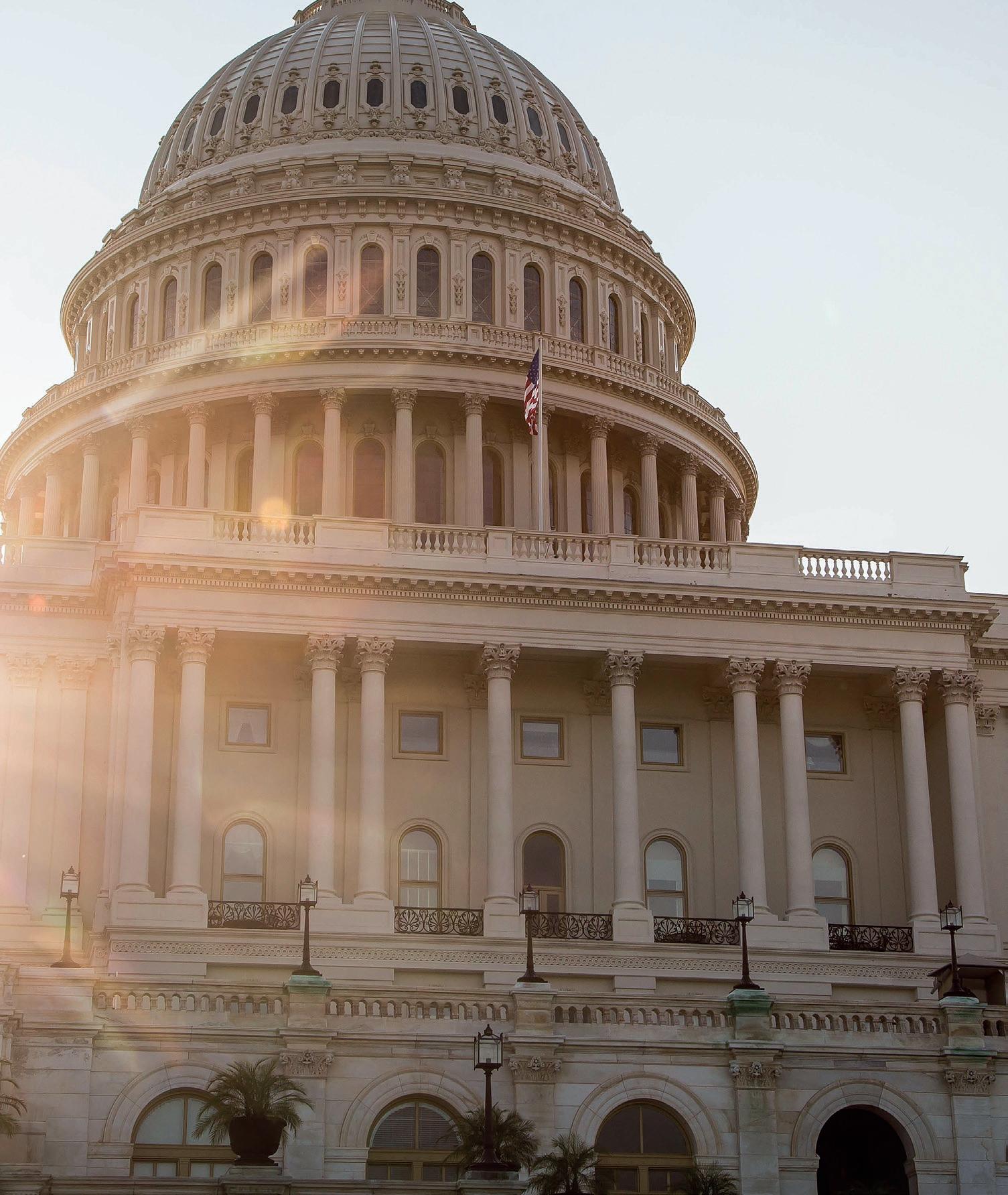
that for every notice and comment or new regulation issued by an agency, the agency must identify at least 10 existing regulations to repeal.
The second part of this order involves the Trump administration’s large-scale, government-wide purge of tens of thousands of employees from the civilian workforce, from defense to agriculture to human health and the environment. At the EPA, which regulates chemicals used in adhesives and sealants as well as their uses, more than 400 employees have been fired, including those who support the agency’s Toxic Substances Control Act (TSCA). TSCA is the law that regulates chemicals in commerce and under
which many ASC members are covered. More firings at EPA are expected.
In early March, President Trump and EPA’s new administrator, Lee Zeldin, said that 65% of the agency’s staff would be let go. Before the dismissals, ASC and others have complained about the agency’s delayed decisionmaking about new chemical reviews, which has hindered members’ ability to quickly get approvals before being permitted to manufacture a new chemical or a new use of a chemical. The severe cuts will undoubtedly exacerbate the problem.
The administration has also introduced reciprocal tariffs on trading partners to address disparities in import taxes and
regulations. While these tariffs aim to protect domestic industries, they have also led to increased costs for manufacturers reliant on imported materials. As we know, not every adhesive or sealant input is produced in the U.S. for every product, especially in a global economy. Imports from a foreign country are, or could be, necessary for many.
It is not yet clear whether, or how, these tariffs are impacting ASC’s members. Adhesives and sealants have not been specifically targeted by either the Trump administration or by retaliatory tariffs from affected countries such as Canada, Mexico, or China. ASC is working with members to gain a clearer picture of their impact. That said, the tariff policy from the administration changes frequently, creating much uncertainty about their impact.
The most immediate concern is to the markets served by adhesives and sealants, such as the U.S. auto industry and building and construction, which are among the top three largest markets for our industry by volume and value. Both the U.S. and Canada have imposed dueling tariffs on products each country produces that could severely impact these industries, such as lumber, aluminum, and steel. Other tariffs that could potentially affect adhesives and sealants have been slapped on paper and apparel products.
China, for its part, has responded to President Trump by imposing a 10% tariff on, among other goods, U.S. automobiles and pick-up trucks, worth $15bn-20bn in Americamade goods. It has also imposed export controls on rare earths purchased by the U.S. for critical uses such as electronics, smart phones, and electric vehicles.
With the Republican-led Congress, expect much support for major policy priorities of the new Trump administration. For our industry, we have a good opportunity to see passage of reforms to TSCA, the EPA regulation, that would require the agency to work faster to approve new chemicals under the regulation.
We can also expect to see tax cuts renewed that were championed by President Trump in his first term. Many have expired or will be soon unless Congress acts. Many of them were rocket fuel for manufacturers. In the first year of the tax cuts, manufacturing job creation experienced its best year in 21 years, according to NAM. Capital expenditures grew 4.5% in 2018 and 5.7% in 2019.
The key takeaway from the 2024 elections is optimism for ASC members on regulatory relief and tax relief. Whether tariffs targeting products and markets served by our industry wipe out those gains remains to be seen.
Elevate your brand with ASC and reach thousands of key decision makers.
The ASC’s Adhesive and Sealant Showcase is a print and digital publication with outstanding reach and readership.
Get in touch to discuss our range of advertising opportunities to showcase your products and services and rise above the crowd.
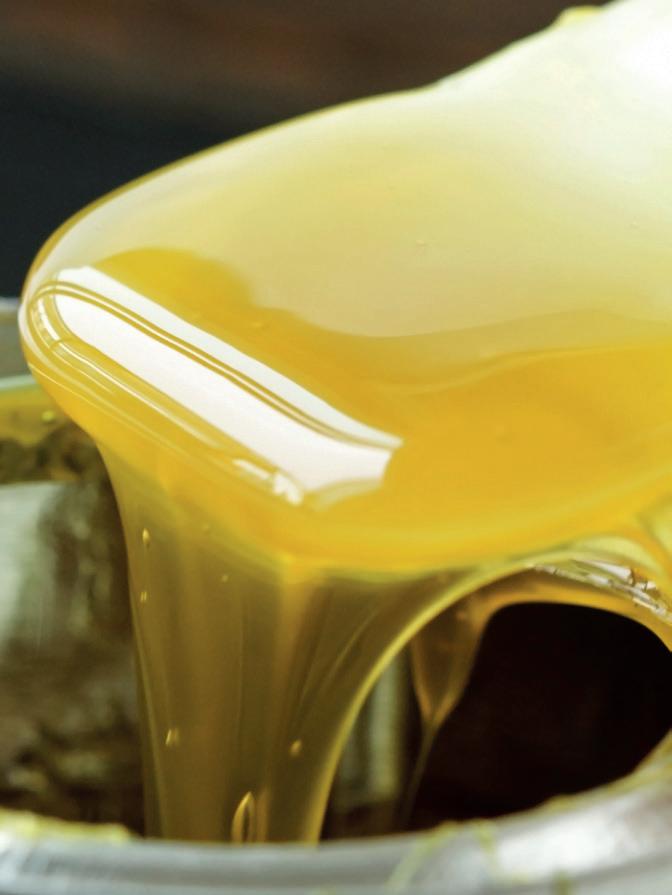


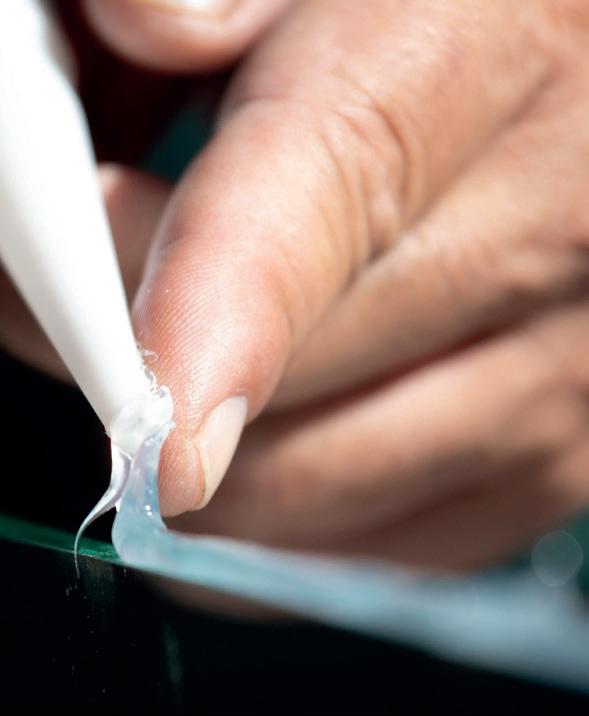

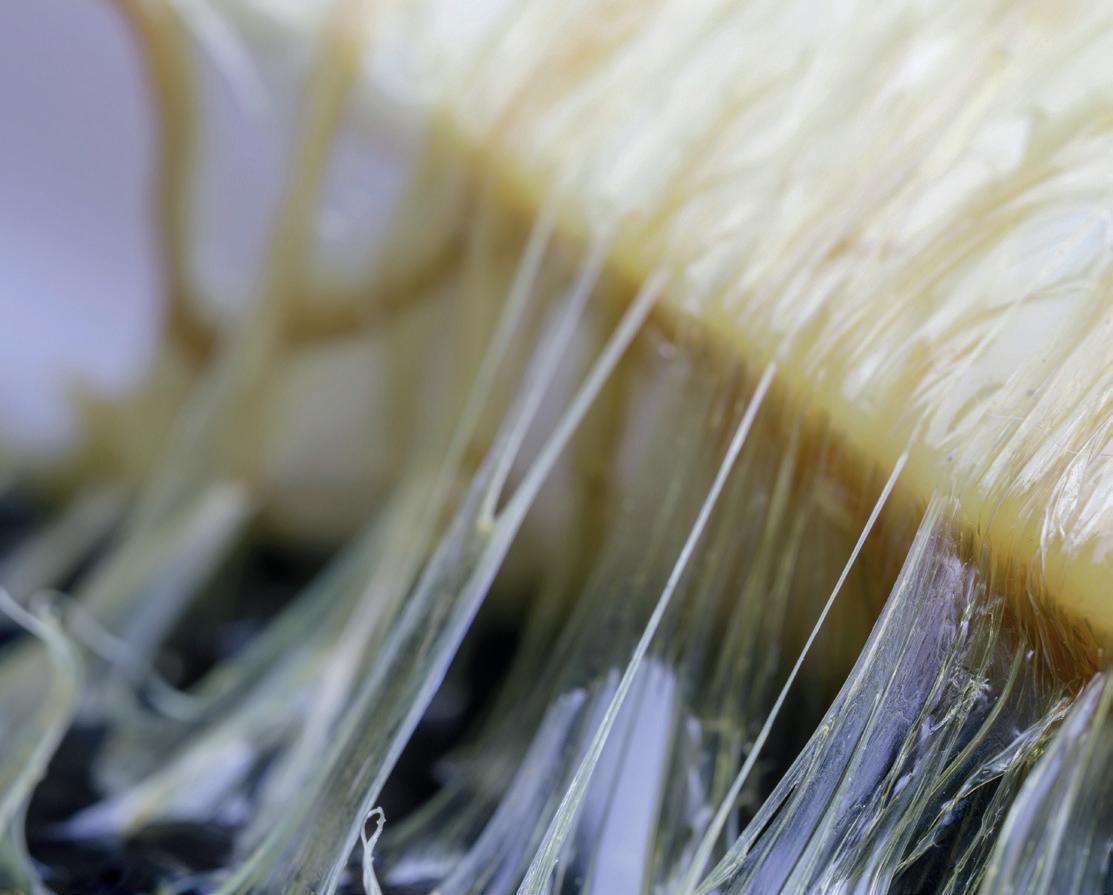
Innovation is crucial for driving growth and profitability in the adhesive and sealant industry – enabling producers to broaden portfolios, strengthen positions, and develop vital new solutions and services.
Discussing its importance to the sector, ASC held a webinar focused on innovation on December 6, 2024. Moderated by Marc Benevento, President of Industrial Market Insight, it featured several former winners of the ASC Innovation Awards.
Newly-elected ASC, Chair Tom Stewart, Business Director, Building Components at Bostik – an awards sponsor since its inception – was part of the discussion.
“We view innovation as the root of everything we do,” said Stewart, adding that the Innovation Awards are an opportunity for the ASC to highlight outstanding achievements. “We hope that by continuing to do this, it motivates individuals. Maybe it sparks that next idea that helps lead to a new innovation that helps our industry continue to grow and move forward.”
A recent webinar considered the huge importance of innovation – and ASC’s annual awards

All entries for the 2025 ASC Innovation Awards have now been submitted, with the presentation taking place at the Annual Convention & EXPO in Jacksonville, Florida in April.
Benevento, one of the Award’s judges, said ASC always looks for strong technical and commercial aspects such as novel technologies that have merit, and at their ability to be implemented from technology, manufacturing, or economic standpoints.
The commercial aspects consider whether there is a meaningful value proposition, if it remedies a real problem, and whether the project’s scale has broad appeal.
Benevento defines innovation as matching problems and solutions. “That’s really innovation in its most basic form and frequently means creating a product that has benefits and features that meet the needs of an industrial company. Companies are much more likely to pay you for things that they need, rather than things that they want. It’s critical to figure out how you separate the needs from the wants.”
During the webinar, the panelists emphasized the importance of understanding customer challenges and gathering different perspectives.
case
missed


for us to get our name out there and be able to work with some really great partners in the adhesives industry.”
“It’s super critical that you have that cross functional conversation with the customer because the customers will always tell you what they want and you have to translate that into what they need,” he said.

Unclear project objectives pose challenges to innovation. Benevento referenced Dr. Robert Cooper from Winning at New Projects, who said: “A project that’s well defined prior to development is three times more likely to be successful.” It is also key to understand what customers are willing to pay for.
Companies remain under pressure to uncover fresh processes to reduce environmental impact and promote sustainability.
Early involvement of technical experts ensures the feasibility of proposals while market, commercial, and business development managers, along with R&D, can provide valuable problem-solving skills. Collaborating with partners also helps to identify other places where they can scale up.
“Design for Six Sigma” and “stage-gate” techniques are popular frameworks adopted by companies to ensure they have the relevant information, engage with stakeholders at appropriate times, and potentially have a better chance of concept delivery.
While it might slow the project initially, the panel asserted having a methodical process made business sense overall. Benevento said it was about balancing speed and process: “Spending more time on definition helps you realize more sales more quickly.”
Geisys Ventures had previously won the award for D-Glue technology, its debondable adhesive platform. Reflecting on the win, Principal Scientist, Kristoffer Stokes commented: “This was a great opportunity
Avery Dennison won ASC’s 2022 Innovation Award for its Advanced Acrylics Technology.
Mark Gower, the company’s Technical Principal, Advanced Materials Solutions said: “It was the sustainability goal that drove us to a high-performance sustainable system.”
“We were able to increase adhesion and cohesion at the same time, and that really put us into the stratosphere in terms of performance and competitive against the best pressure sensitive adhesives in the marketplace,” he said. “Once we won the ASC award for innovation, we had more people from Avery Dennison knocking at our door to understand where they could leverage this technology.”
Lee Polance, Group VP Technology at H.B. Fuller – another winner – added: “Since the award we have established several partnerships, and our focus is on increasing our capacity at Bellevue.” Her team won in 2024 for developing a game changing thermoplastic photovoltaic encapsulate called TPX.
Helena Strathearn Earl
How will the torrent
tariffs
Now that we have been contending with the varying tariff threats for a few months, it is probably useful to review the whole concept of a tariff as we look at how it impacts a given sector.
One of the most vulnerable of these sectors in the U.S. is construction, but most of manufacturing has been affected – positively in some cases and negatively in others. These are sectors that have been truly global as far as their supply chains are concerned as product and raw materials originate from everywhere across the globe.
Tariffs are among the oldest trade manipulators in the world because the concept is simple. Use taxation (tariffs) to encourage a consumer to buy a domestically produced product instead of an imported version.
It generally works like a charm if certain conditions are met. The most important of these is the need for the existence of a comparable domestic product. If there is no acceptable rival for the import the consumer has no choice but to buy the import and pay the higher prices. The domestic consumer essentially pays the tariff as the exporter will simply pass that higher price on.
Remarks about the tax benefits to the U.S. are misleading as the U.S. cannot tax another nation. The extra cost of the good affected by a tariff will be paid by the U.S. consumer as the importer hikes prices to cover the tax.
This brings up the second condition.
Can the consumer pay the higher prices? The likelihood is the domestic alternative will be more expensive simply because the costs of production are generally higher in the U.S. and the tariffs will ensure that the imported version will be more costly as well. Will U.S. consumers have the ability to pay more? Perhaps, but the most likely response will be a reduction in demand and scaled down projects, with perhaps some abandoned altogether.
It is also important to understand the “real” intent of a tariff. It is fundamentally a tool used to underpin negotiations and bargaining. A nation is threatened with a tariff unless there is a concession granted. It has been abundantly obvious that this has been a tactic already deployed by President Trump. Mexico and Canada were threatened with immediate 25% tariffs but avoided them for a month (so far) by agreeing to increase their commitment to border security.
The EU is working to blunt a tariff on exported cars by reducing their 10% tariff on U.S. cars entering their market. Taiwan is hoping to avoid tariffs on the export of silicon chips by agreeing to build additional chip manufacturing capacity in the U.S. – and South Korea is doing the same.
It is one trade-off after another. If one looks back at President Trump’s first term, there were 18,200 tariff exemptions granted as nations negotiated deals and as U.S. companies pointed out the damage these tariffs would do to them. For example, steel and aluminum tariffs on every nation



“Where does this leave U.S. businesses and consumers? Unfortunately, in a state of some uncertainty”

Chris Kuehl Managing Director, Armada Corporate Intelligence
soon devolved as Canada, Mexico, Brazil, Argentina, Europe, Turkey, Japan, South Korea, Taiwan, India, and Australia were exempted to one extent or another.
Lastly, purchasing managers are learning to look at the Net Effective Tariff Rate when gauging the potential risk of a tariff on products.
The Net Effective Tariff Rate occurs after currency exchange differences are factored in. Consider (oversimplified) a product worth $100 from a country with a 10% tariff imposed. The product cost is $110 under the applied tariff. But if the country getting hit with the tariff devalues its currency by 10% (as is often the case), the product would then cost $90 and after a 10% tariff is applied, it would only cost $99 (an actual discount to the pre-tariff amount).
There are many other factors that can affect that, and the tariff policy that gets applied often considers this devaluation strategy and the tariff is set high enough that there is a net impact even after currency devaluation. In addition, the devaluation of currency carries with it other economic impacts to the country using this strategy – such as inflationary increases on inputs, higher cost of capitalization, negatively impacts Treasury rates, etc.
Estimates suggest the tariffs applied on Chinese products in the 2018/2019 period were offset by currency devaluation in the yuan, making the Net Effective Tariff Rate for U.S. importers ~15% on 25% applied tariffs and ~5% for 15% tariff categories. This is

partly why inflation did not move in the 2018/2019 period (it actually increased by 0.2% overall).
Where does this leave U.S. businesses and consumers? Unfortunately, in a state of some uncertainty. It is not clear that a given tariff will be imposed nor for how long. It may be delayed or abandoned if concessions are made. It becomes a matter of leverage – and who has it. Most nations need the U.S. market and will be willing to do what it takes to preserve that access.
For decades the U.S. approach has been to favor the needs of the consumer at the expense of the producers. We wanted the consumer to have the best product at the lowest price – no matter where it came from. We have lost billions in productive capacity and hundreds of thousands of jobs in the process. Now there is a push to get these back, but it will come at a cost –namely higher prices for the consumer.
If we project a few years down the road, it will be a safe bet that certain industries will return to the US – mostly the more sophisticated sectors that need to be close to their consumer base. It is also a safe bet that consumers will be paying higher prices across the board. Some estimates are as high as 20% in sectors currently dominated by imported goods.
Given the ever-shifting tariff position from the Trump administration, portions of this article were accurate at the time in which it was written but may have since changed.

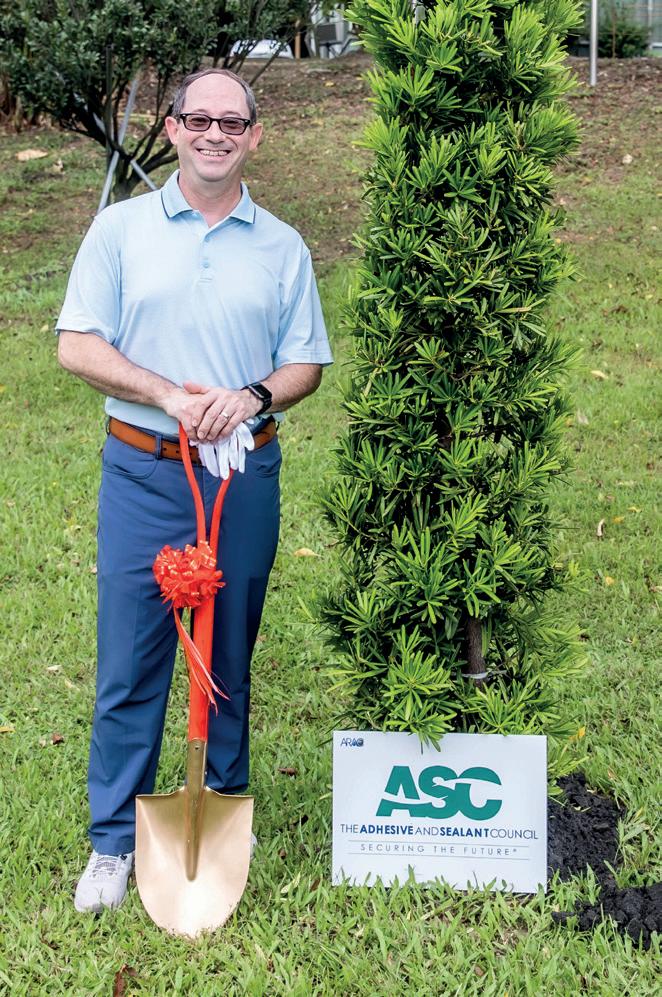
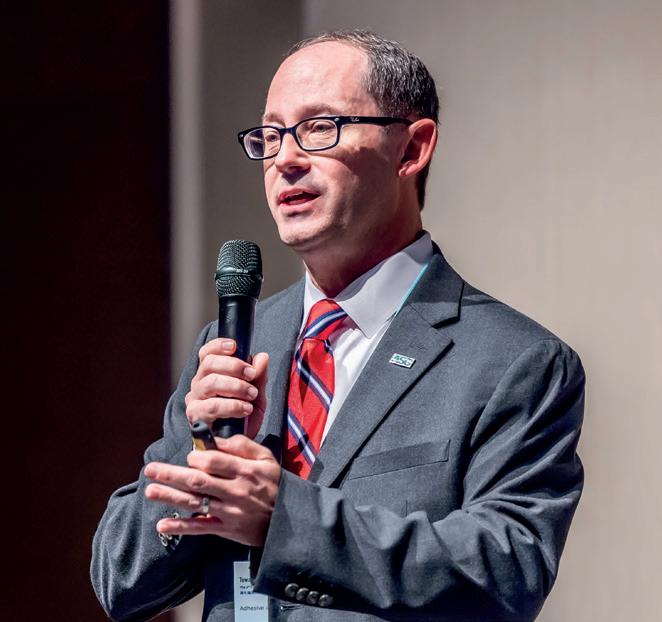

ASC was represented at the special global Association Heads Meeting from October 2830, 2024. ASC President, Bill Allmond, travelled to Kaohsiung City, Taiwan, to meet with colleagues from other associations around the world and discuss the big issues facing the adhesive and sealant sector, the latest market developments, as well as regulatory changes and challenges







Education is one of the cornerstones of ASC’s strategic objectives, with the training, tools, and resources supporting members in their professional development
Providing the essential skills, knowledge, and expertise to its membership has always been a key priority for ASC.
By delivering diverse and detailed content through in-person training events, webbased courses, and live and on-demand workshops and webinars, the association aims to provide the necessary training to help both the current and future workforce, says Bill Allmond, ASC President.
“Innovation plays very prominently in the adhesive and sealant industry, and we focus a lot of our resources and tools on helping ASC members continue to innovate,” he says. “In order to innovate, you have to have a fundamental understanding of the industry, the gaps that exist, and the unmet needs of customers.”
“Our education and training programs are geared toward helping our members understand the industry and the technical aspects of all the different applications, product types, and product categories for adhesive and sealants.”
At the heart of the organization’s
educational opportunities are three core programs: the Training Academy, the Scholarship Program, and the Grow the Industry Program.
The Training Academy is ASC’s core technical program, which is split into two distinct segments: in-person events and online training.
The former takes place at the annual spring
“We provide a deep dive into the fundamentals and a thorough understanding of the industry, our products, and their applications”
Bill Allmond President, ASC

Convention every April, where attendees can participate in technical short courses before the main meeting and then continue their learning by joining the concurrent educational tracks during the two days of the conference.
There is a total of six of these short courses, which are rotated every three years and cover key market technologies: Waterborne Adhesives; Hot Melt Adhesives; Polyurethane Adhesives; Caulks and Sealants; Formulation Strategies; and Pressure Sensitive Adhesives.
The second portion of the Training Academy is available via a dedicated virtual platform that includes live webinars and an ever-growing library of on-demand recordings.
Each year, ASC hosts 10-15 hour-long webinars that drill down into the latest market developments, technologies, and chemistries (www.ascouncil.org/events/webinars).
In addition, ASC regularly offers Free Friday Webinars led by industry experts and innovators. This is the only occasion any of ASC’s featured speakers can mention trade names and commercial content in the

educational webinars.
ASC members also have access to the Training Academy Certificate program – or TAC (www.ascouncil.org/certificateprogram). For an annual fee, the virtual learning platform offers commercial and technical professionals access to over 90 different courses, each lasting 1-2 hours.
New modules are regularly added to the library, and are designed and written by professors, consultants and industry experts. The program requires 12 courses to be passed within a year in order to obtain a completion certificate. Half of these are mandatory core courses, which have been developed exclusively for the TAC program, while the remaining six can be selected from the library based on users’ specific role, market, or interests.
“Over the years we’ve had manufacturers, formulators, suppliers, and end users go through our Training Academy Certificate program,” says Mani Singh, Director of Technical Services at ASC. “It was launched in 2016 with the key goal of providing the

In addition to the spring Annual Convention and short course workshops, ASC offers excellent training and professional development at other events throughout the year as well. Every September, ASC’s two-day Sustainability Summit explores policy, trends, targets, and the many challenges and opportunities. Billed as the only North American sustainability event for the adhesive and sealant industry, the packed agenda offers the ideal setting to explore this increasingly important area. A month later, decision makers, leaders, and senior management are invited to attend the annual Executive Leadership Conference – a must attend event exclusively for those focused on navigating change and steering companies to success.

Learn more about the industry and the essential role played by adhesives and sealants by tuning into Connected to ASC each month. Lasting around 30 minutes, these convenient, bitesize episodes see hosts Bill Allmond, ASC President, and Brian Peters, Director of Membership & Industry Programs, interviewing key industry figures or delving into varied topics such as sustainability, innovation, and market trends. Input is also always welcome from ASC members – whether they want to feature on one of the recordings or have ideas for future content. Connected to ASC is completely free and all recordings are available via the dedicated podcast page at www.podomatic.com/podcasts/bill-allmond.


For more in-depth insight, ASC’s website is home to detailed reports offering analysis, quantitative market data highlighting topline trends, technology innovations, and the key drivers for the years ahead. Among the most recent publications are the North American Market Report and the latest edition of the Building & Construction Report (www. ascouncil.org/store/industry-reports).
A visit to www.adhesives.org offers a huge amount of information about the science and chemistry of adhesives and sealants. This great free resource for both industry and the public includes a detailed overview of the sector, a section on the science of adhesion, market information, best practices and standards, videos, news, and more.
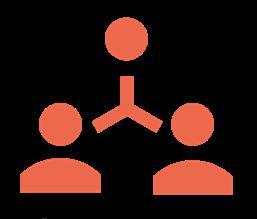
ASC collaborates closely its sister organization, the Adhesion Society (www.adhesionsociety.org). The Adhesion Society has its own Board of Directors and budget, but ASC manages the membership database, communications, and meetings. The Society offers tremendous educational value and meets once a year, when abstracts and papers are presented by academia, government, and industry.

The first ever International Adhesive and Sealant Day was held on September 29, 2023, and now takes place each year. Working in conjunction with ASC’s European and Asian counterparts, FEICA and ARAC, the aim is to educate the public and industry stakeholders on the countless ways these invisible but ubiquitous products benefit our lives on a daily basis (www.InternationalAdhesiveSealantDay.com).
necessary technical training to the adhesive and sealant professionals across the globe.”
“The key courses in the program focus on the deep fundamentals of adhesion science including adhesives, sealants, formulations and testing necessary to succeed in the industry. Learners can find courses covering all markets, chemistries, technologies, and applications. The TAC program proudly boasts more than 800 graduates who have completed the course requirements, with many more accessing the LMS platform from over 80 companies and 18 countries.”
“It’s really important that ASC provides these services because we want our members to be successful,” she continues, “and one of the key things that will help them be successful is when their workforce is up to date with the latest developments and market fundamentals.”
With an eye to supporting future generations in their studies and helping them take their first tentative steps in the industry, ASC is also proud to offer its popular Scholarship Program.
Launched in 2017 by the late Rusty Thompson, former President of Evans Adhesive and member of the ASC Board of Directors, its first scholarships were awarded in 2018. Recently renamed the Rusty Thompson Memorial Scholarship in his honor, it awards 5-6 scholarships worth $2,0003,000 to students each year.
“The aim is to expose college students to the adhesive and sealant industry with the hope it will encourage them to consider it as a career after graduation,” says Allmond. “By helping students with a science and businessrelated background or major achieve their
“We want our members to be successful and one of the key things that will help them be successful is when their workforce is up to date with the latest developments and market fundamentals”



academic goals, we all win in the long run.”
From March 1, 2025, freshmen, sophomores, and juniors studying eligible courses were invited to submit their applications for the Fall 2025 Semester.
For the first time this year, there is also the opportunity for recipients to gain hands-on industry experience via a summer internship or co-op with one of ASC’s member companies (www.ascouncil.org/scholarshipprogram).
The purpose behind the Grow the Industry program, says Allmond, is to actively engage end users – and particularly those in the automotive, packaging, and building and construction markets.
ago, for example, we produced white papers and selection guides for automotive design engineers for when they were assembling a particular portion of the vehicle – whether it was the battery in EVs or the body and white process where the vehicle is moving down the assembly line – explaining where there were opportunities to utilize adhesives.”
ASC also regularly visits trade shows across the U.S. that focus on these three core end use markets. Members of ASC’s team will attend, exhibit, or in some cases present, with the intention of raising awareness about the industry and encouraging the adoption of adhesive and sealant use downstream.
“ASC is not unique in providing education for everyone from the senior executive down to the new college graduate,” says Allmond, “but I do believe our education and training is some of the most extensive. We provide a deep dive into the fundamentals and a thorough understanding of the industry, our products, and their applications.”
Being able to learn from peers and colleagues is invaluable, he continues, and ASC is proud to offer a forum where people can pose questions and get answers directly from thought leaders, academia, and industry experts.
Mani Singh Director of Technical Services, ASC
“We do this in multiple ways,” he says. “We work closely with our members to develop white papers, training tools, and selection guides – and then make these available for free to downstream end users. Not so long
“There really is nowhere else in our industry that enables such high-quality education and those important connections,” he says. “We really are the catalyst for training and networking for the North American adhesive and sealant industry.”
Andy Brice

Sustainable, Life Enabling Products






ENGINEERED FOR PERFORMANCE TRUSTED FOR INNOVATION

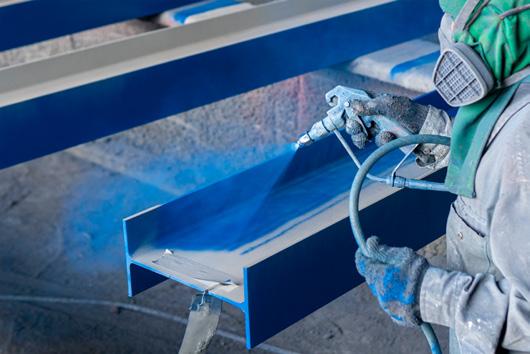




SPECIALTY WAXES & POLYMERS DESIGNED TO ENHANCE PERFORMANCE ACROSS A VARIETY OF INDUSTRIAL APPLICATIONS




